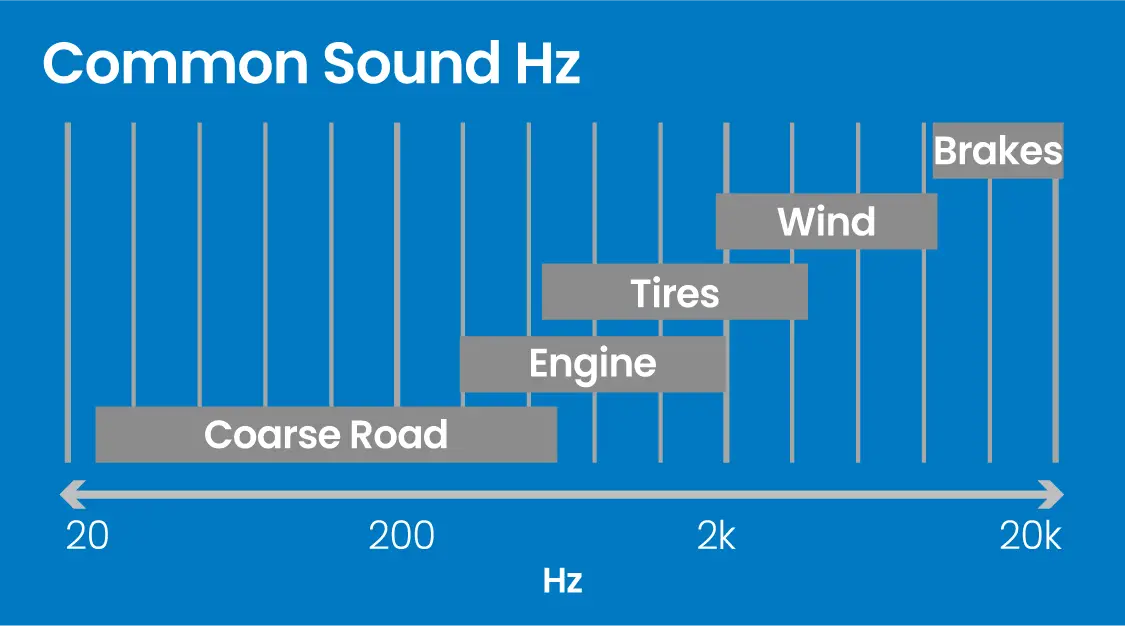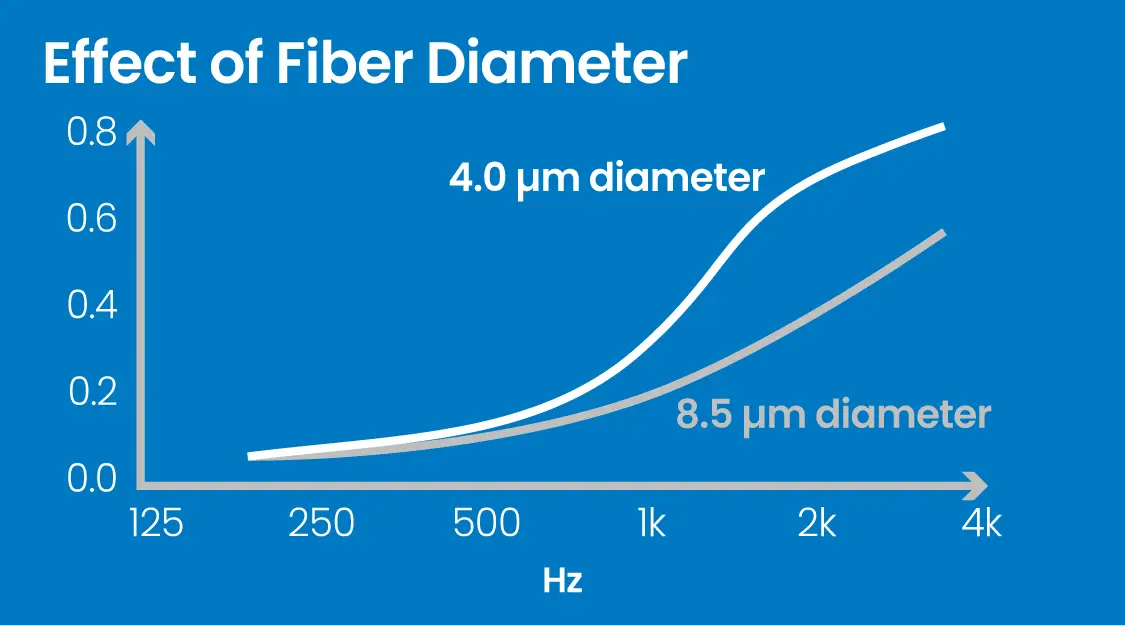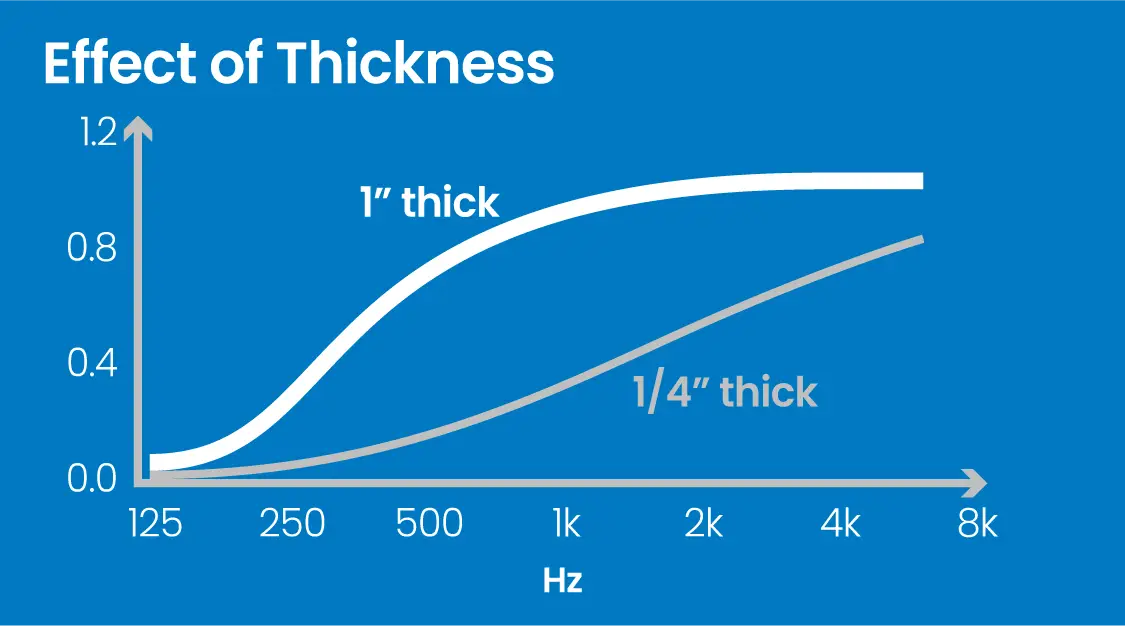
How Sound is Transmitted
Sound is transmitted in the form of sound waves, which are a series of pressure variations. Sound waves are characterized by the generic properties of waves, which are frequency (hertz or Hz), wavelength (inverse of frequency), period, amplitude (commonly dB or decibel), intensity, speed, and direction.

Human perception of Sound
For humans, hearing is limited to frequencies between about 20 Hz and 20,000 Hz (20 kHz). Higher frequencies are generally perceived with greater intensity up to about 8,000 Hz (8 kHz) and then decrease again. In other words, a 60 dB sound at 40 Hz may be barely noticeable, while a 60 dB sound at 2,000 Hz would be very noticeable.

Human perception of Sound — Cont.
In automotive applications, common unwanted noise have a variety of frequencies, depending on the source. The shown chart illustrates general frequency ranges of noise from various sources.

Fiber Diameter Effects
A smaller fiber diameter results in better absorption, especially in the middle and higher range frequencies. A 50% reduction of fiber diameter results in a four fold increase in flow resistivity. Sonozorb has a fiber diameter generally 3 to 30 times smaller than comparable synthetic acoustic insulations.

Material Thickness and Density Effects
Generally the thicker the insulating material, the more effective the absorption. Material that is more dense will also achieve better absorption performance.